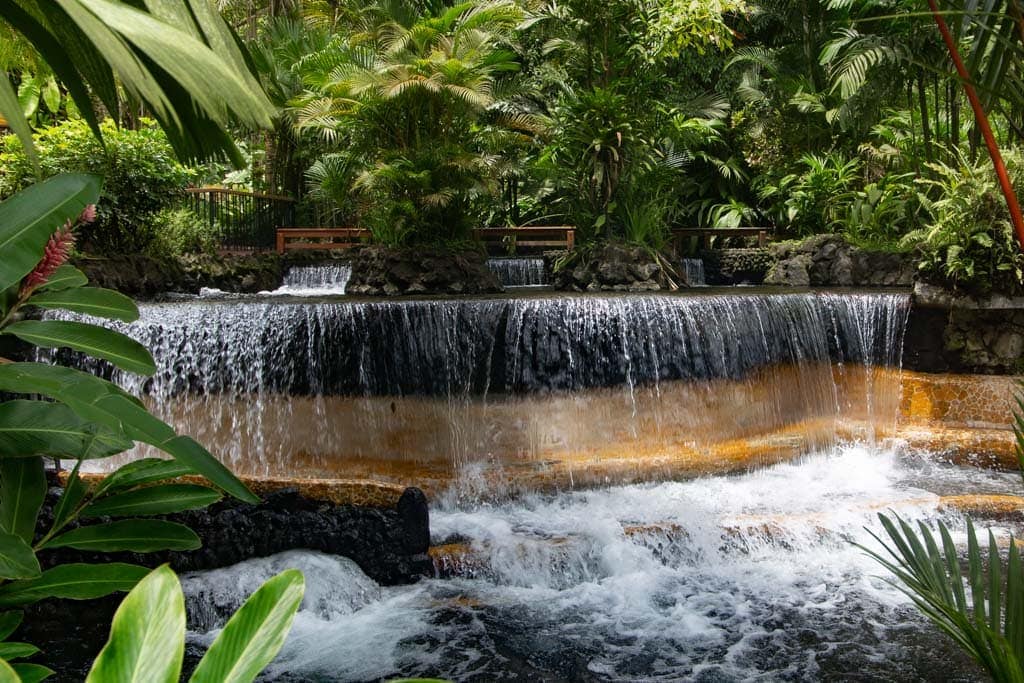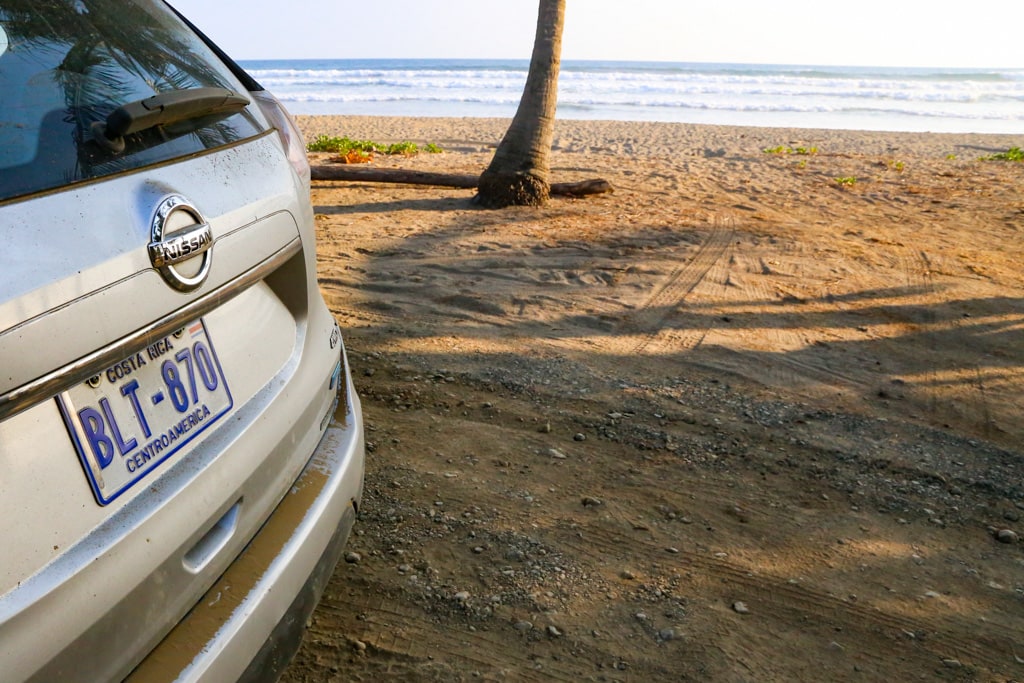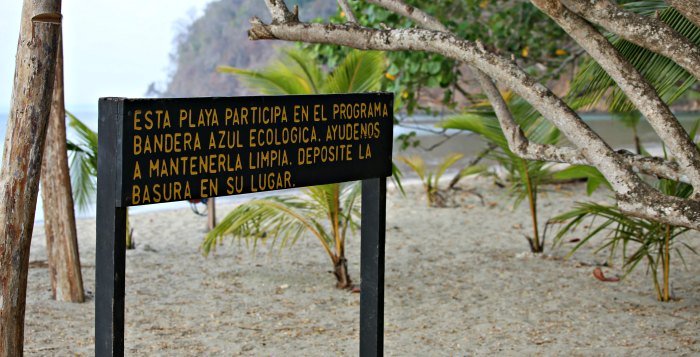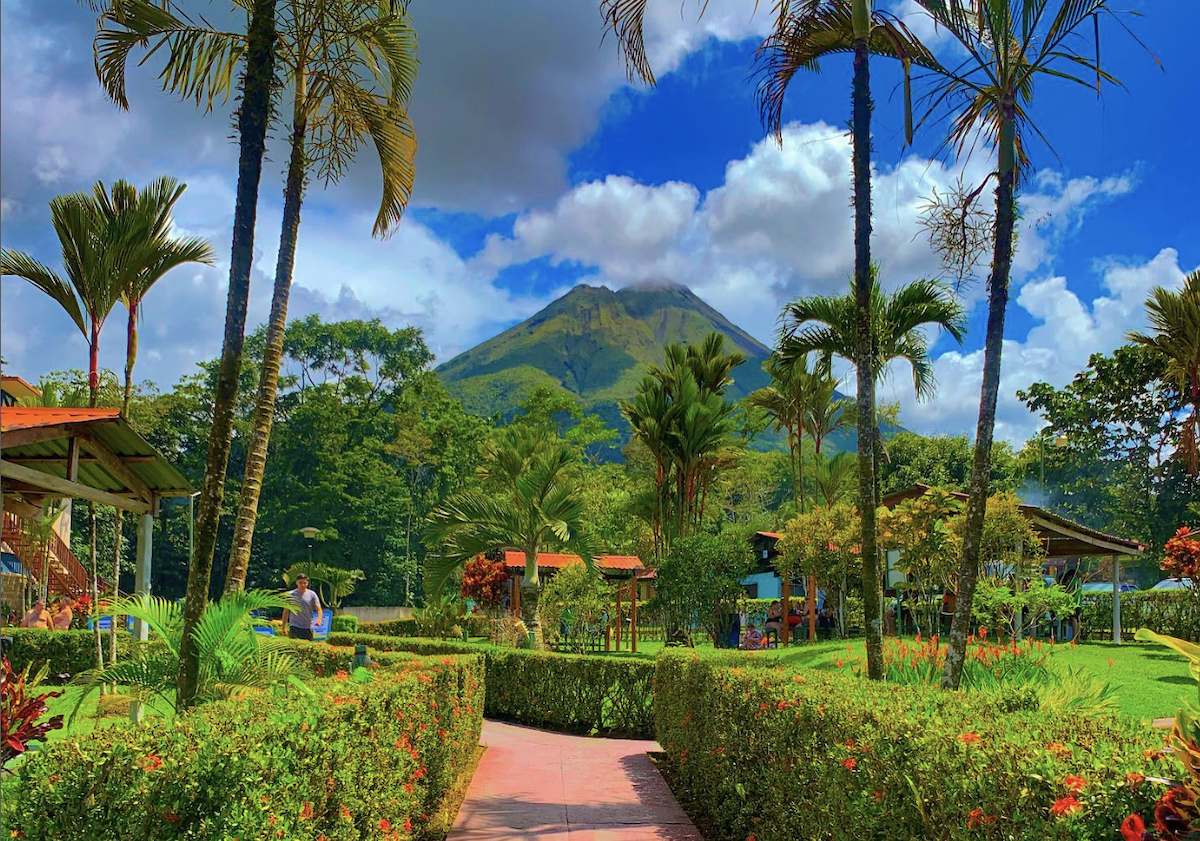Popular Costa Rica Animals
This post may contain affiliate links.
Scientists estimate that Costa Rica accounts for around 6% of the world’s biodiversity! That means Costa Rica is one of the best countries in the world to see animals.
While some of Costa Rica’s wildlife (such as the many wild cats) are mostly seen on nighttime infrared cameras, many of the fascinating species that are home in Costa Rica can be observed easily while on vacation.
It’s not hard to see green iguanas sunbathing on the beach, swimming with sea turtles, or soaring scarlet macaws against the setting sun at the beaches of the Pacific Ocean.
We absolutely love to spot wildlife in Costa Rica- it’s become a really exciting and fun activity to do with our kids. Whether it’s monkeys and sloths, birds and butterflies, or just incredible insects, our girls love to hunt wildlife.
To that end, I highly recommend you invest in these laminated pocket guides from Rainforest Publications. They are prominent throughout Costa Rica and used by guides there, but they are cheap and easy to get on Amazon. We let the girls hold them and do scavenger hunts, and they are provided literally hours of entertainment both in Costa Rica and when we are in the US.
RELATED POST: Costa Rica With Kids- The Complete Guide
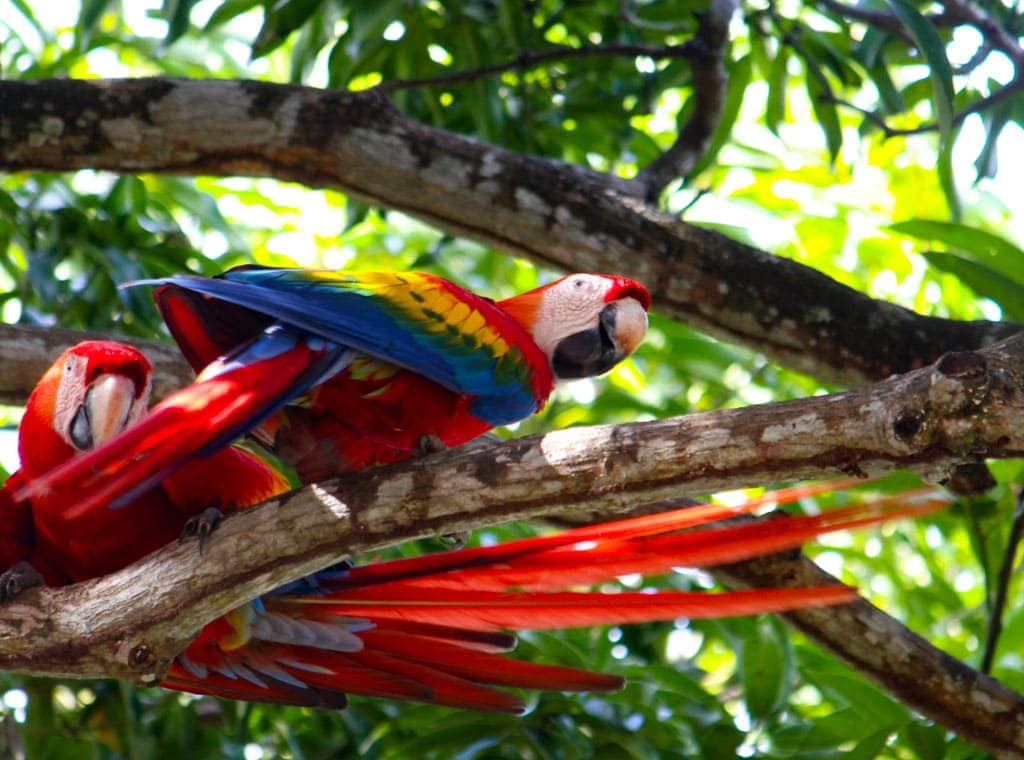
Tucan (tucán)
These colorful birds that have trouble flying with their big beaks are easily observed when hopping up a tree and snacking on fruit such as Papayas. Tucans often come in groups and are some of the most easily found, yet magical animals in Costa Rica. This guy we photographed at the La Paz Waterfall Gardens.
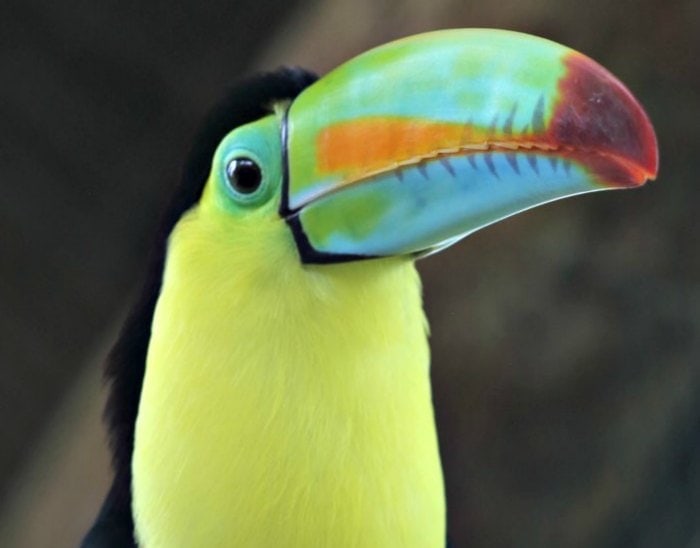
Sloths (oso perezoso)
One of the most emblematic Costa Rican animals since it seems to exemplify the country’s Pura Vida lifestyle. Sloths are best known for their slowness and for spending their days hanging upside down in tropical rainforests.
They are one of the oldest mammal species still alive. In the Pleistocene epoch of the earth, many terrestrial sloth species inhabited the Americas, ranging up to the size of elephants.
There are several sloth species in Costa Rica, one of the best places to see the hairy animals is in the Cahuita National Park.
Related post: Hanging Bridges Costa Rica: Family Travel Guide
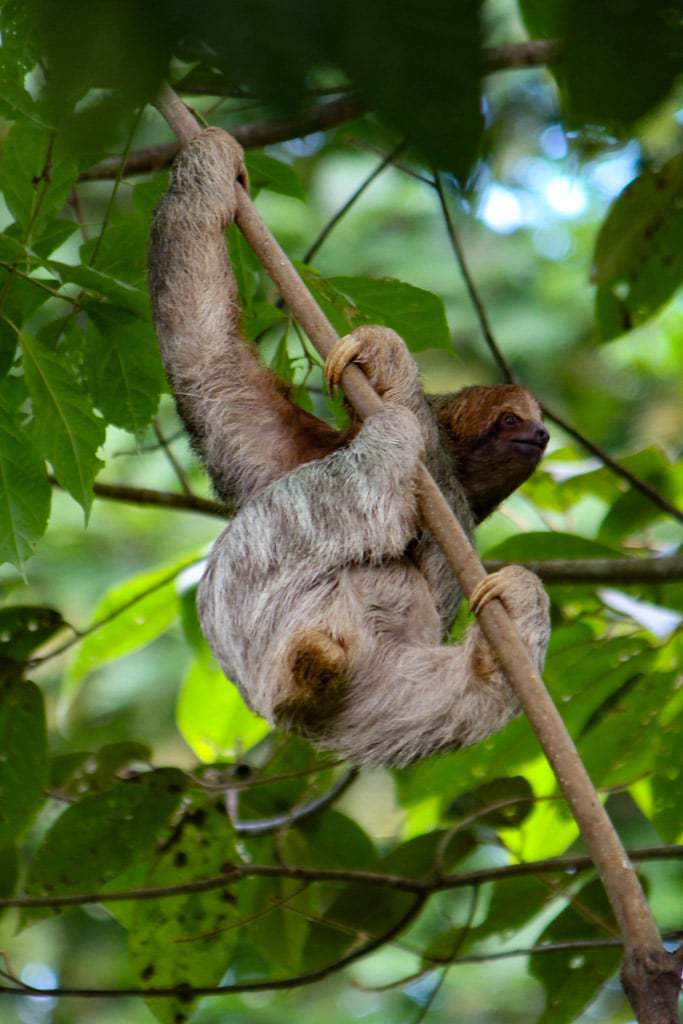
Related post: Guide To Costa Rican Fruit
Monkeys (monos)
There are so many types of monkeys in Costa Rica. A quick rundown:
White-Faced Capuchin Monkey (mono cariblanca)
The white-faced capuchin monkeys are some of the most friendly and interactive monkeys in Costa Rica. They can easily be observed in the Manuel Antonio National Park, but be careful if you are carrying food. Due to people feeding them in the past, some of these monkeys have developed a taste for human foods and will get somewhat aggressive if you don’t give them what they want.
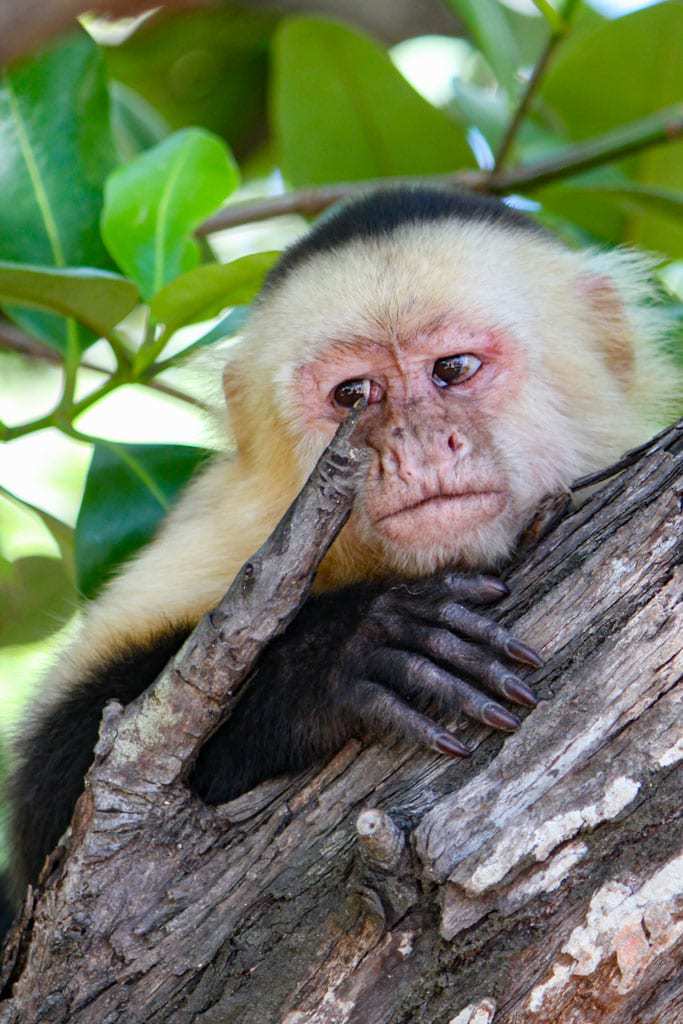
Howler Monkey (mono congo)
Much easier to see than to hear, these mean guys primates live high up in the trees, mostly in the lower elevations. In Costa Rica, they are known as Mono Congo.
Their chant can be heard through long distances, especially in the morning hours. They will throw coconuts at you. So make sure to stay clear!
Squirrel Monkeys
The Squirrel monkey, also known as Mono Titi is one of the less common monkey species in Costa Rica. They can be observed mainly on the Pacific coast around the Osa Peninsula and Pavones.
Spider Monkeys
Spider monkeys, easily distinguished for their unique way of movement and long extremities, occur throughout the country, from the hot tropics to the cloud forest around the Chirripo National Park.
Related post: Costa Rica Weather
Tapir
Living in wildlife refuges in higher elevations, tapirs are shy night-active animals and you have the best chances of spotting one at dawn or dusk. Often, you will be more likely to see their characteristic footprints on hiking paths.
Best place to see tapirs? Casitas Tenorio! They have their own Tapir reserve and expert guides.
Related post: All about Mosquitos In Costa Rica: How Bad Are They Really?
White-Nosed Coati
Known in Costa Rica as pizote, white-nosed coatis live in dry and moist forests all over the Americas. You have a good chance of seeing one when visiting parks such as the Corcovado National Park. I always see them on the beach at Nacazcolo and also on the road from Tilaran to La Fortuna.
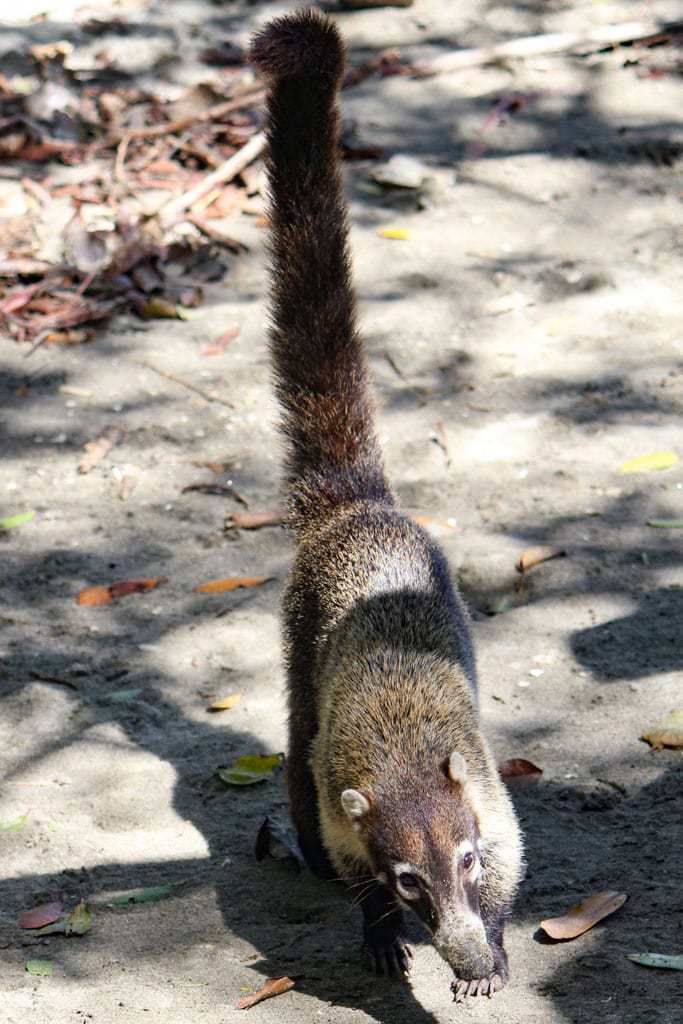
Blue Morpho Butterfly (mariposa morpho)
With wings spanning from five to eight inches, the Blue Morpho is amongst the largest butterflies in the world. Its reflective blue wings are easily spotted against the lush green of tropical forests and seeing a Blue Morpho is always a magical experience.
We love seeing them at the butterfly gardens, and I often spot them flying while I am driving towards the Caribbean coast from San Jose- so keep an eye out!
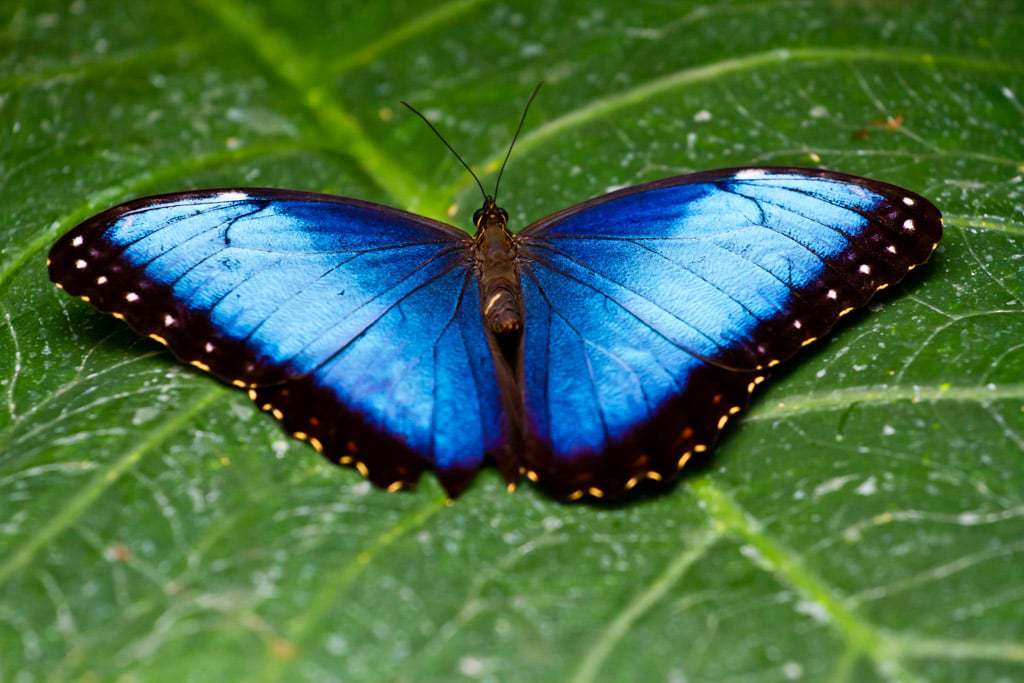
Poison Dart Frog (rana venenosa)
There are several species of colorful, tiny poison dart frogs in Costa Rica. Just like the famous red-eyed tree frogs, they are found in tropical rainforests along the coast.
The largest number of these I have seen are at both Rancho Margot family farm near La Fortuna, and La Carolina lodge near the Blue River. We saw a ton of the blue jeans frogs at the largest tree in Costa Rica near there too.
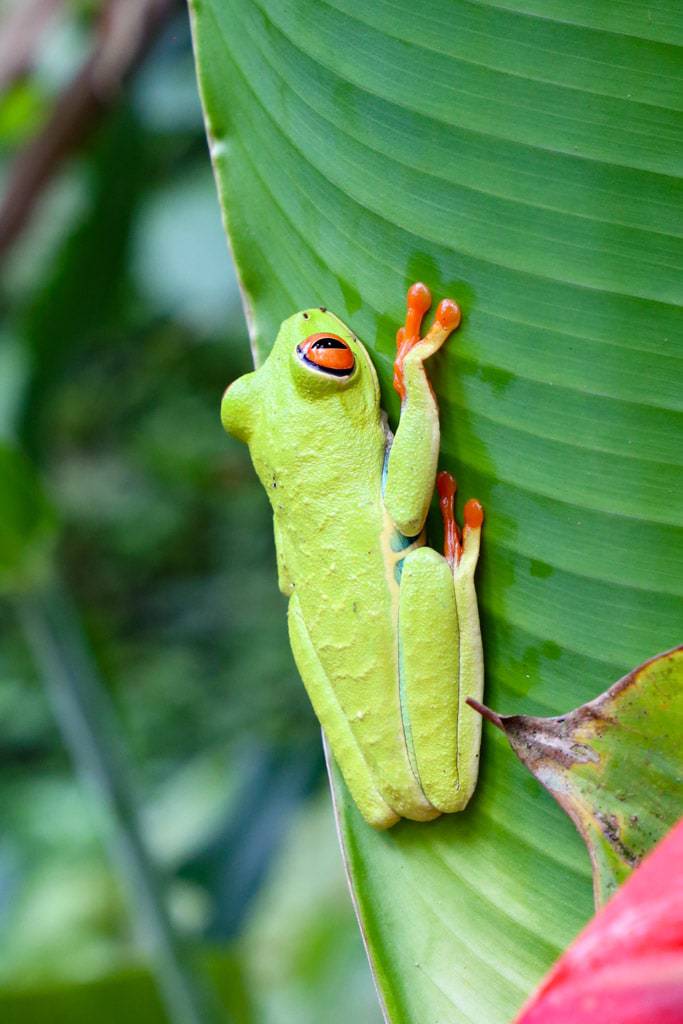
Dolphins and Whales (delfines y ballenas)
During the whale season from July to November and December to April, you can with some luck see whales migrating along the Pacific coast and around the Osa Peninsula.
Some of the best areas to go whale-watching are the beach towns of Uvita and Dominical. Dolphins can be observed in the Caribbean as well as the Pacific all year round.
We saw them most recently on our day trip from the bioluminescent bay to Tortuga Island.
Quetzal
This beautiful, shiny, green bird is found in areas of high altitude such as the Monteverde cloud forest or the Dota region. It is most easily observed during its breeding season from February to June.
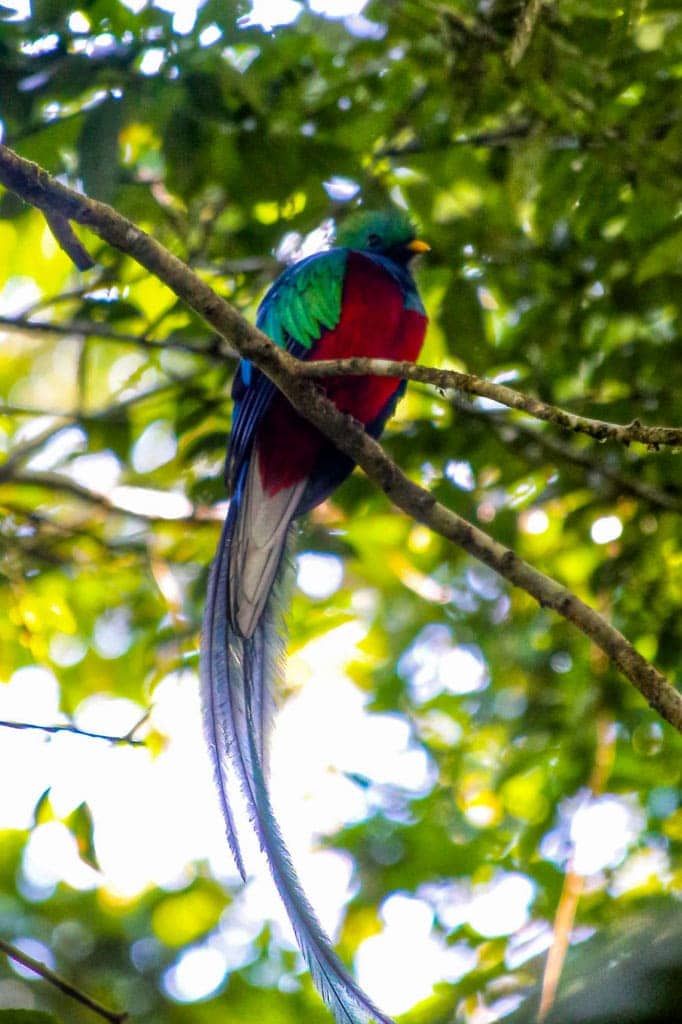
Snakes (serpientes)
Besides cute and cuddly animals, the lowland tropics are also home to other, equally fascinating but more dangerous creatures. Snakes such as the Bocaraca, also known as eyelash viper, and the Terciopelo are a stunning sight, but you want to observe them from a distance. Lots of these guys hang out near Tortuguero National Park.
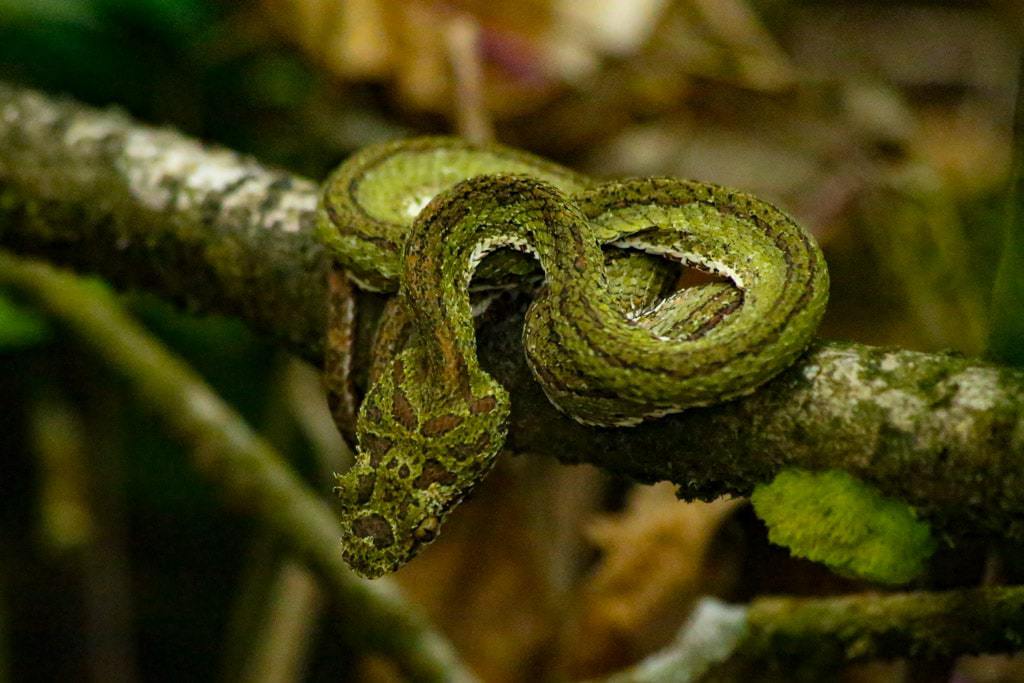
FAQ
What are the most common animals in Costa Rica?
Some of the most common animals that can easily be seen almost anywhere in the country are Toucans.
What animals live in Costa Rica?
Costa Rica is home to a wide variety of animals from North and South America.
What is the most dangerous animal in Costa Rica?
The Terciopelo snake is the most dangerous animal, as its venom can be lethal unless treated. In Costa Rica, improved treatment facilities have made the fatality rate to almost 0%.
How many animal species are there in Costa Rica?
Costa Rica is home to more than 500,000 species.
What is the wildlife like in Costa Rica?
The wildlife is highly diverse and easily observable in parks and reserves.
What predators live in Costa Rica?
Besides the Terciopelo and Bocaraca Snake, Costa Rica also has crocodiles, jaguars, pumas and sharks.
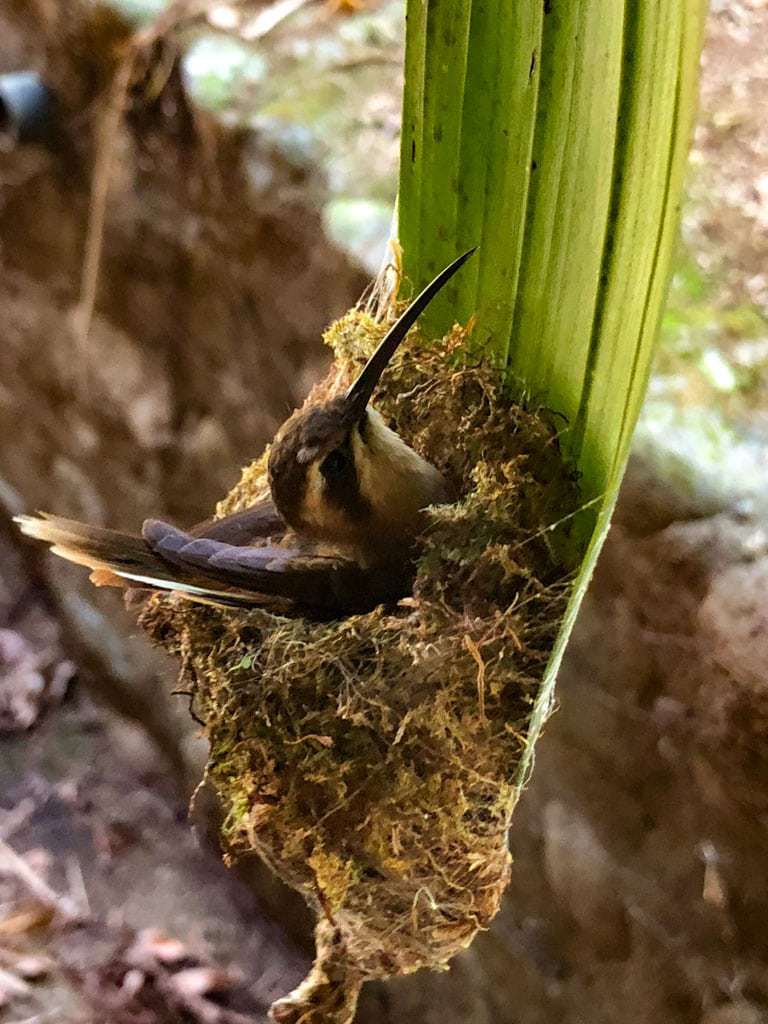
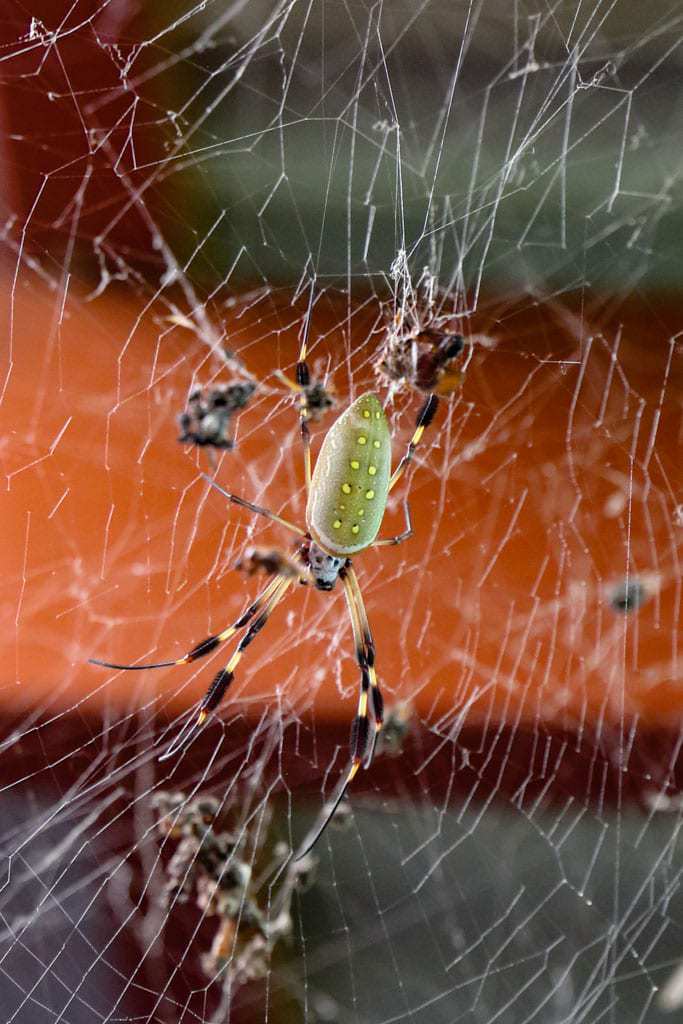
Don’t Forget To Pin It!
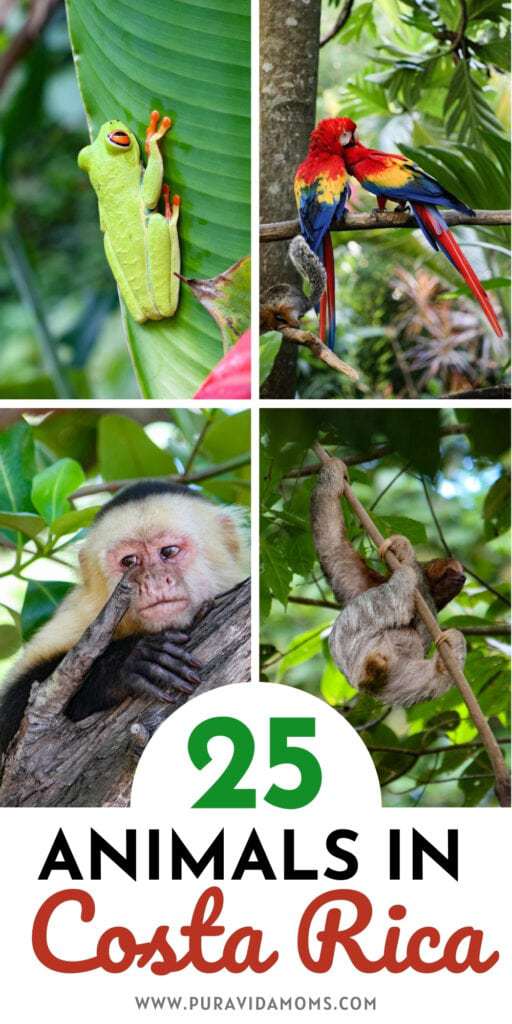

Christa Jimenez
Welcome! I’m Christa, a Spanish teacher married to a handsome Costa Rican and mother of two bilingual daughters. We’ve spent over 25 years living in and traveling to Costa Rica with our daughters, and this website is my love letter to all things Costa Rica- and to bilingual parenting too. You can read my full story here. Thanks for stopping by!




